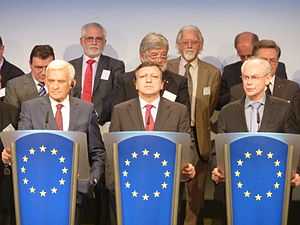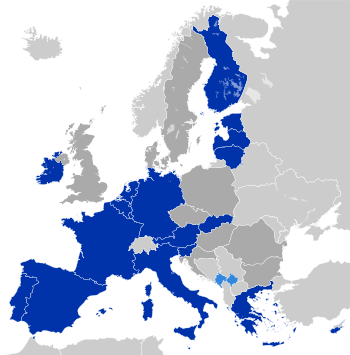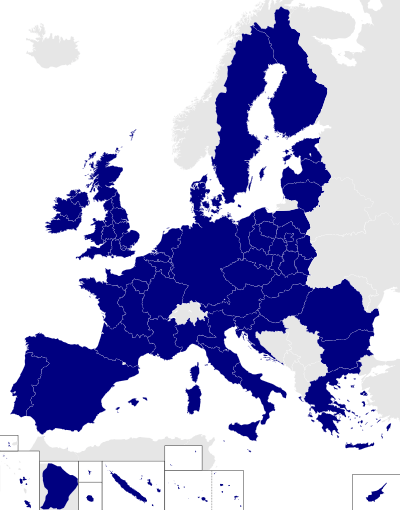President of the European Union

| European Union |
 This article is part of a series on the |
Policies and issues
|
Elections
|
President of the European Union (or President of Europe) could be a reference to any of:
- President of the European Council (since 1 December 2014, Donald Tusk)
- President of the European Commission (since 1 November 2014, Jean-Claude Juncker)
- Presidency of the Council of the European Union (since 1 January 2015, Latvia)
- President of the European Parliament (since 1 July 2014, Martin Schulz)
Among the cases presented above, referring to the President of the European Council as the President of the European Union (EU) is very common in the international media.[1][2] Nevertheless the post presides only over the European Council - an institution of the EU - rather than presiding over the EU as a whole.
Prior to the Treaty of Lisbon, each member state (in turn) took the responsibilities of both the Presidency of the European Council and the Presidency of the Council of the European Union. The press frequently summarised these responsibilities to the shorthand tag "EU Presidency" or "EU President", both for the country holding it or its political leader. Nevertheless, this, too, was a misnomer.
The Commission Presidency has had fewer mentions using this term, despite being the one with the most powers.
There are other EU institution Presidents, but they do not hold the profile to have had the title applied to them.
There is, simply, no President of the European Union as a whole: each of its institutions has its own President. Each one is chosen by the members of the institution concerned, except the Council, whose Presidency rotates automatically among Member States, and the Commission, whose President is elected by the European Parliament. In protocol (ceremonial) terms, it is the President of the Parliament who comes first, as it is the only directly elected institution and is listed first in the treaties.
The question of whether the European Council or Commission President is more important has been potent since the former's creation by Lisbon. Both attend international summits and since 2010 the Commission president has started to deliver State of the Union addresses, modelled after the US President's.[3] It is sometimes suggested that the two posts should be merged.
See also
References
- ↑ Profile: Herman Van Rompuy: EU's new president Waterfield, Bruno The Telegraph, 20 November 2009
- ↑ President Who? The Washington Post, 22 November 2009
- ↑ José Manuel Durão Barroso President of the European Commission State of the Union 2012 Address Plenary session of the European Parliament/Strasbourg, 12 September 2012

